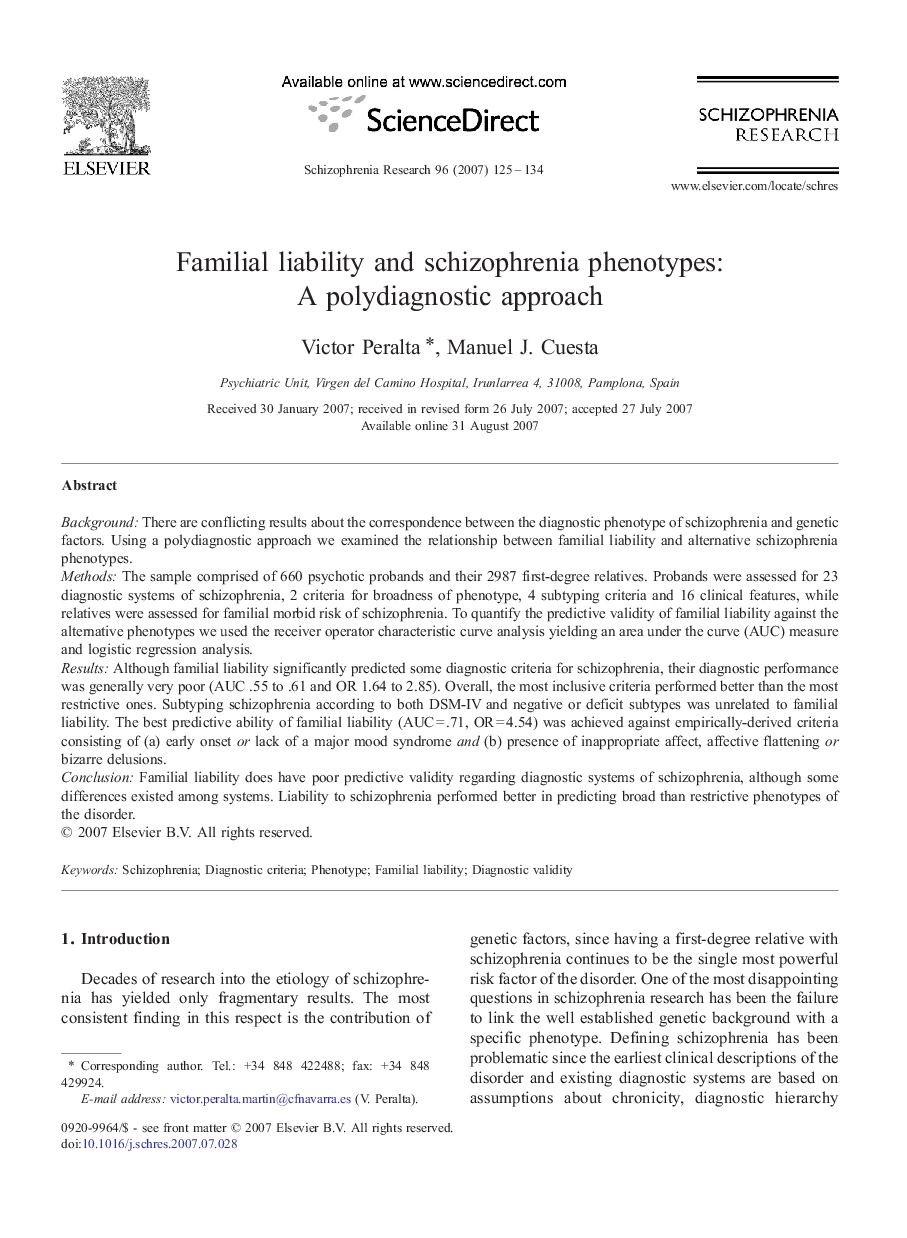| Article ID | Journal | Published Year | Pages | File Type |
|---|---|---|---|---|
| 340074 | Schizophrenia Research | 2007 | 10 Pages |
BackgroundThere are conflicting results about the correspondence between the diagnostic phenotype of schizophrenia and genetic factors. Using a polydiagnostic approach we examined the relationship between familial liability and alternative schizophrenia phenotypes.MethodsThe sample comprised of 660 psychotic probands and their 2987 first-degree relatives. Probands were assessed for 23 diagnostic systems of schizophrenia, 2 criteria for broadness of phenotype, 4 subtyping criteria and 16 clinical features, while relatives were assessed for familial morbid risk of schizophrenia. To quantify the predictive validity of familial liability against the alternative phenotypes we used the receiver operator characteristic curve analysis yielding an area under the curve (AUC) measure and logistic regression analysis.ResultsAlthough familial liability significantly predicted some diagnostic criteria for schizophrenia, their diagnostic performance was generally very poor (AUC .55 to .61 and OR 1.64 to 2.85). Overall, the most inclusive criteria performed better than the most restrictive ones. Subtyping schizophrenia according to both DSM-IV and negative or deficit subtypes was unrelated to familial liability. The best predictive ability of familial liability (AUC = .71, OR = 4.54) was achieved against empirically-derived criteria consisting of (a) early onset or lack of a major mood syndrome and (b) presence of inappropriate affect, affective flattening or bizarre delusions.ConclusionFamilial liability does have poor predictive validity regarding diagnostic systems of schizophrenia, although some differences existed among systems. Liability to schizophrenia performed better in predicting broad than restrictive phenotypes of the disorder.
